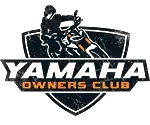
speeedee
Free-
Posts
4 -
Joined
-
Last visited
Content Type
Profiles
Forums
Gallery
Events
Yamaha Racing News.
Media Demo
Store
Collections
Classifieds
Everything posted by speeedee
-
Hi Max, According to the manual a 1985 DT50 (DT50MX) is:- Overall length: 2055mm (80.9 in) Overall width: 835mm (32.9 in) Overall Height: 1135mm (44.7 in) hope this helps!!!! If you can find one, a DT80MX engine will slot straight in!!!!! well worth it.
-
When you check for spark, put plug into cap but remember to rest it on cylinder head, to earth the threads or hexagonal part of plug! Do not hold it! This should then show if sparking or not. The most likely cause of this problem is that the carb jets will be blocked due to non use during winter and therefore the carb will have to be dismantled and cleaned carefully. Do this by removing float bowl to get access the brass or nylon jets. Remove and clean them out with suitable cleaner or try blowing them but best not to use wire etc. on soft brass jets as this may damage them. Make sure fresh petrol is used as it goes 'off' after a while, or so I'm told. Good Luck!
-
I am restoring a 1982 DT80 (5J2 engine) which is mounted in a later (2FN) DT50MX frame. My problem seems to be that, once engine warms up after 5 or 10 mins riding (field bike) it begins to splutter, idle becomes eratic and dies on me. I had a non standard carb on, when this first happened and found that the spark plug had given up after only an afternoons riding. The carb I now have on is from a later model (12X), it runs much better, but again after 10 mins the old symptoms came back. (The plug chop showed good results both times) I have so far replaced plug, HT lead, coil, condenser and points with original (5J2 parts). Could it be ignition source coil breaking down when warm? Is replacing points ignition to electronic ignition (from DT50MX) straight forward, as I have it from donor bike? Any one have experience of conversion or recognise symptoms? It's driving me mad....
-
The cable end sits in a small barrel shaped housing, which fits into this lever mechanism. This mechanism fits onto a grooved hollow shaft(worm) within a plastic housing attached to the cover. Within this hollow shaft there is a threaded rod which is adjustable by means of a screwhead and lock nut. The small spring is attached to a hole on the small lever and the other end sits on a small pin fitted near the bottom of engine casing. The long rod that slides in and out (clutch push rod) is pushed by this mechanism and engages/ disengages clutch plates at other side of engine. The clutch springs at the other side of engine provide the tension for the handle bar lever to return and keeps the clutch plates together. The little spring on lever mechanism keeps the cable in tension. To connect it up (if it is all there): The small side cover that fits over the flywheel, connected to the engine casing by three bolts has to be removed. Fit the clutch cable to handle bar lever, adjusted with plenty of slack Push other end of cable thru hole in detached engine casing and engage it to lever mechanism. Make sure small spring is in place. (Pulling handle bar lever, you will see this mechanism go in and out) Now, with the threaded adjuster rod inside the worm removed replace the engine cover and tighten its bolts. Adjustment is done by screwing threaded adjuster rod into worm until resistance is felt i.e. it is contacting end of clutch push-rod. Then back off screw head on adjuster rod by 1/4 turn. Now hold it in this position with screw driver and tighten lock nut gently. You can now make adjustments using cable adjusters. It's a bit fiddly but that's how its done. good luck
